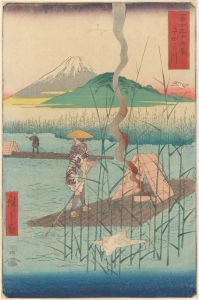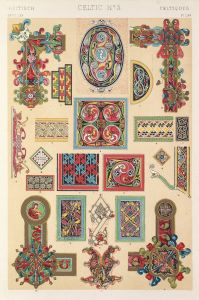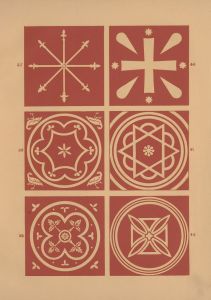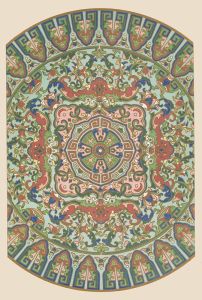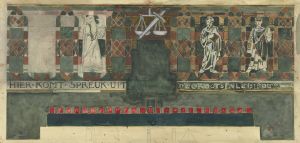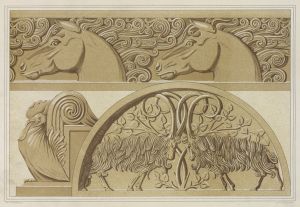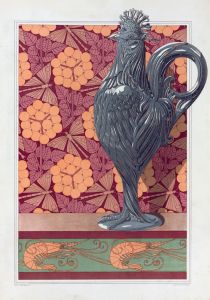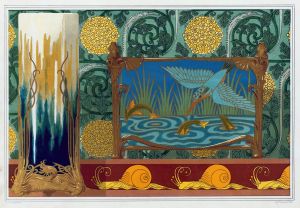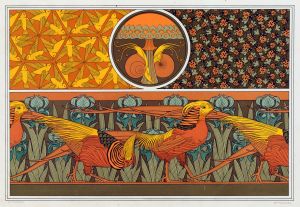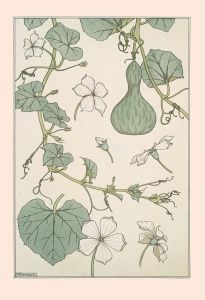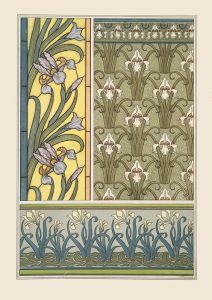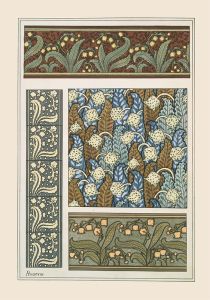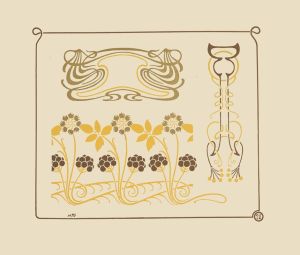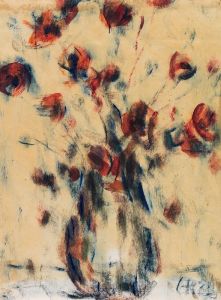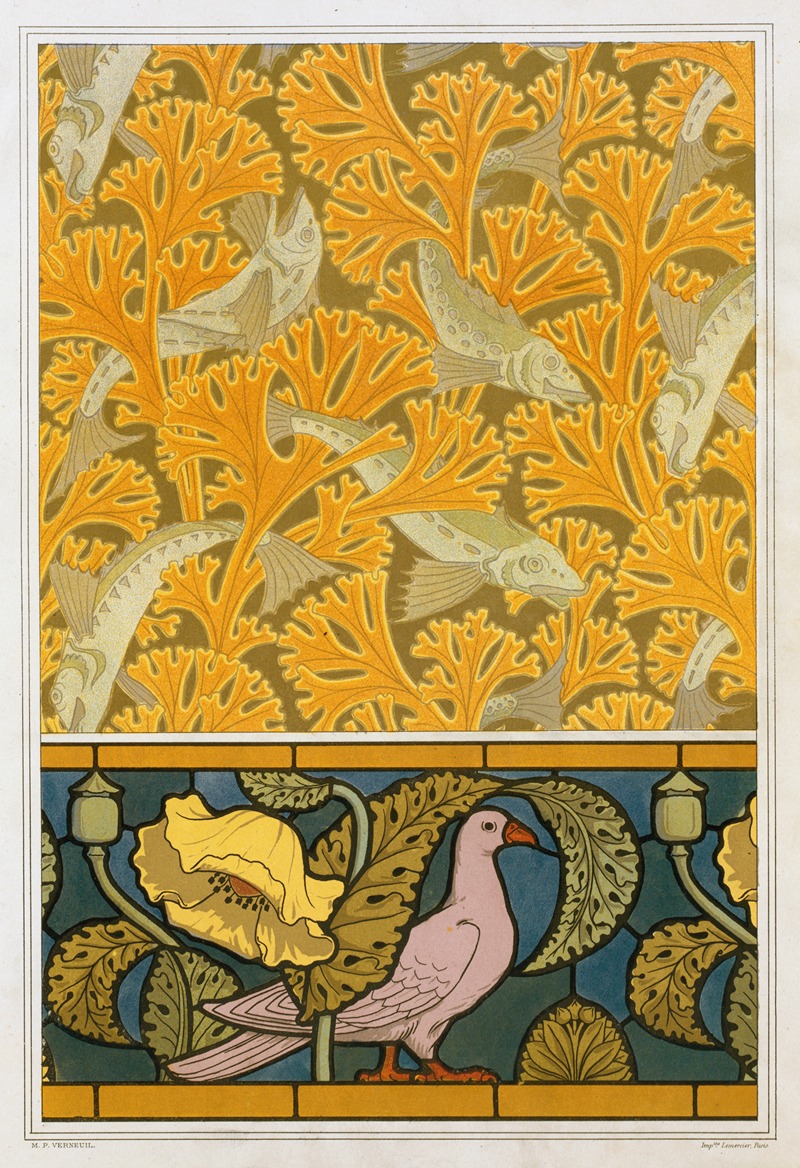
Poisson et algues, papier peint; pigeon et pavots, bordure de vitrail
A hand-painted replica of Maurice Pillard Verneuil’s masterpiece Poisson et algues, papier peint; pigeon et pavots, bordure de vitrail, meticulously crafted by professional artists to capture the true essence of the original. Each piece is created with museum-quality canvas and rare mineral pigments, carefully painted by experienced artists with delicate brushstrokes and rich, layered colors to perfectly recreate the texture of the original artwork. Unlike machine-printed reproductions, this hand-painted version brings the painting to life, infused with the artist’s emotions and skill in every stroke. Whether for personal collection or home decoration, it instantly elevates the artistic atmosphere of any space.
Maurice Pillard Verneuil (1869–1942) was a French artist and designer known for his contributions to the Art Nouveau movement. He specialized in decorative arts, including wallpaper, stained glass, ceramics, and illustrations. His works often featured natural motifs, such as plants, animals, and marine life, rendered in the flowing, organic style characteristic of Art Nouveau.
The artwork Poisson et algues, papier peint; pigeon et pavots, bordure de vitrail is a notable example of Verneuil's design work. The title, which translates to "Fish and Algae, Wallpaper; Pigeon and Poppies, Stained Glass Border," reflects the dual nature of the piece, which combines two distinct decorative elements. The first part, "Fish and Algae," refers to a wallpaper design featuring aquatic themes, while the second part, "Pigeon and Poppies," describes a stained glass border design incorporating birds and floral motifs.
This work exemplifies Verneuil's fascination with the natural world and his ability to translate organic forms into decorative patterns. The fish and algae in the wallpaper design are depicted with intricate detail and stylized curves, emphasizing the fluidity and movement of underwater life. Similarly, the pigeon and poppies in the stained glass border are rendered with a harmonious interplay of color and form, showcasing Verneuil's skill in creating visually striking yet balanced compositions.
Verneuil was heavily influenced by Japanese art, particularly ukiyo-e prints, which introduced him to new approaches to composition and the use of bold, flat colors. This influence is evident in Poisson et algues, papier peint; pigeon et pavots, bordure de vitrail, where the simplified yet dynamic forms and the emphasis on decorative patterns reflect the aesthetics of Japonisme. Additionally, the work aligns with the broader Art Nouveau movement's emphasis on integrating art into everyday life, as both wallpaper and stained glass were functional decorative elements intended for interior spaces.
While specific details about the creation date or commission of this particular work are not readily available, it is consistent with Verneuil's broader body of work, which often combined artistic innovation with practical application. His designs were widely admired during his lifetime and continue to be celebrated for their elegance and creativity.
Verneuil's contributions to decorative arts extended beyond his own creations; he also authored several books on design and ornamentation, further cementing his influence on the Art Nouveau movement. His works remain an important part of the history of decorative arts, and Poisson et algues, papier peint; pigeon et pavots, bordure de vitrail serves as a testament to his artistic vision and technical skill.





